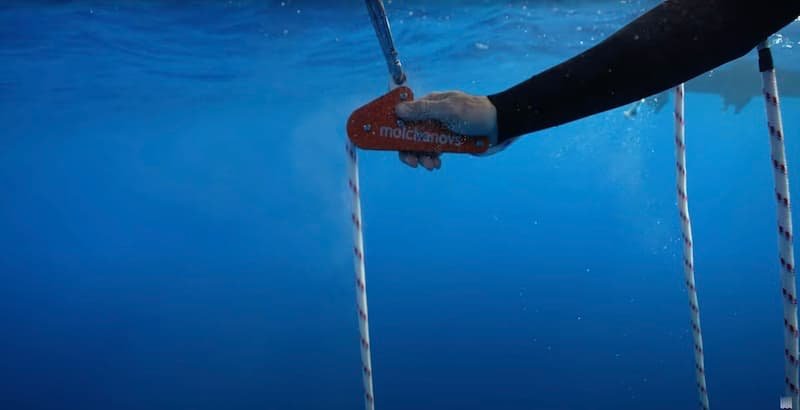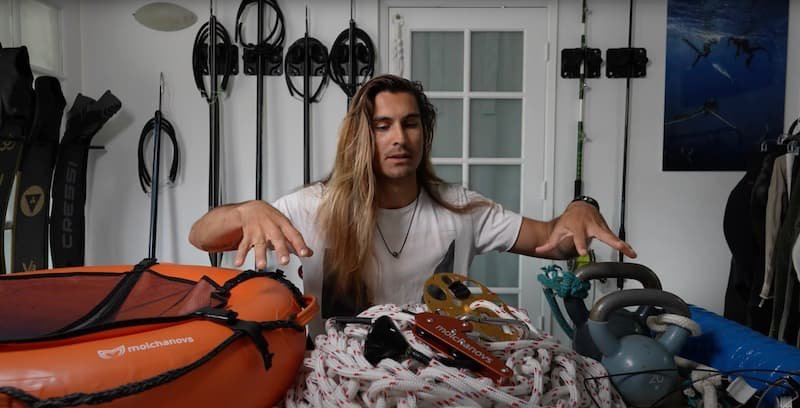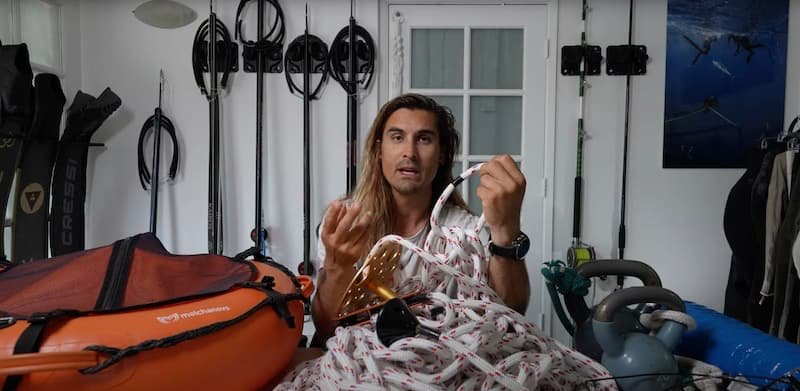
 Nick Pelios
Freediver, Creator
Nick Pelios
Freediver, Creator

 Nick Pelios
Freediver, Creator
Nick Pelios
Freediver, Creator
Welcome to an expert's guide to optimizing your line diving setup! Alchemy partner Josh Munoz, a seasoned freediving instructor and professional underwater photographer, shares invaluable insights and recommendations to enhance your diving experience. From essential gear like buoys and pulleys to practical tips on rope management and safety measures, Josh's expertise ensures you're well-prepared for your underwater adventures.
First up is the float. I highly recommend investing in a high-quality float. Avoid cheap options from Amazon as they tend to wear out quickly. A good float should be durable, resistant to sun damage, and have ample space for storing masks, nose clips, lanyards, and GoPros.

A pulley system is a game-changer for raising and lowering your rope. I went years without one and regretted it as soon as I tried it. A pulley system must be robust and user-friendly, significantly enhancing safety and convenience.

When it comes to the line, save money by purchasing a double-braided polyester line on Amazon. Aim for 150 to 300 feet in length with a thickness of about 10 mm. While some brands sell pre-marked lines, you can easily mark your own with tape. I mark mine every 5 meters, using black tape for general increments and adding color for significant depths, such as red tape at 50 meters.

Marking your rope is crucial for precise depth management. Here’s a quick guide:
Every 5 meters: One piece of black tape.
Every 10 meters: Two pieces of black tape.
Significant depths: Add color, e.g., red tape at 50 meters.
Beyond 50 meters: Combine colors and black tape for clarity.
This method saves money and allows for custom depth markers.

A lanyard stopper prevents your body from drifting past the line's end and into the weight. You can buy stoppers from various brands or make one using a tennis ball. Bright colors are common, but in shark-prone areas like Hawaii, consider painting it to avoid attracting attention.

A bottom plate can hold an action camera for deep-depth filming but isn’t essential. More importantly, a heavy weight (at least 20 lbs, ideally 30 lbs) keeps your line taut and prevents it from lifting. I prefer using a kettlebell over a makeshift weight belt setup due to reliability and ease of use.

Keeping your rope organized is vital. The double daisy chain method is particularly effective:
Single Daisy Chain: Create loops and pull the rope through sequentially.
Double Daisy Chain: Use both hands to create two loops at a time, which organizes the line better and allows for quick deployment.
Locking the ends with an overhand knot prevents tangling and makes transportation easier.

Lanyards are essential for safety, especially when diving deeper than 20 meters, in strong currents, or poor visibility. They attach you to the dive line, ensuring you stay connected. I prefer the Octopus lanyard due to its lighter carabiner, which reduces drag and makes diving smoother. Replace lanyards every two years to maintain their effectiveness.

Having a float, such as taped-together pool noodles or a deluxe party noodle, is invaluable during rough conditions. It provides a stable platform to rest and prepare between dives. Attach it to your main float or boat to prevent drifting.

Setting up your line diving gear with quality equipment can make a significant difference in your diving experience. Prioritize a good float, pulley system, and lanyards, and consider the other recommendations for a safe and efficient setup.